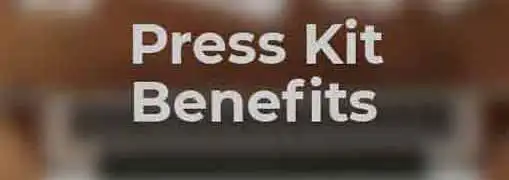Press Kits
Press Kit Mistakes to Avoid
Media professionals rely on press kits for background information about companies and other organizations. Here are just some of the mistakes you'll want to avoid when it's time to create a press kit to support your business's PR efforts.
Press kits are more than flashy marketing pieces.
For reporters, media contacts, and others, a press kit can be an important resource for generating media coverage for your business. When a reporter is in a pinch, they're more likely to cover businesses with high quality press kits than they are to report on companies with skimpy or outdated press packets.
Most businesses generate their own press kits. Although a PR firm can advise you about what to include in your kit, most of the footwork needs to be done by company personnel, so it doesn't make sense to outsource your press kit to a third-party provider. The problem is that some companies, especially small businesses, lack the expertise to compile a first-rate media kit. The actual process of creating a press kit isn't difficult - they just need guidance about how to generate materials that are capable of competing for the media's attention.
The most common mistake is to include too much content in the media kit. Press kits that contain reams of material are often unread because they lack focus. It's okay to have a large quantity of content on hand, but it should be introduced selectively, on a case-by-case basis, to support key messaging. Here are some other common press kit mistakes you'll want to avoid.
- Content gaps. An effective press kit should provide a complete picture of a targeted message. You need to avoid overwhelming the recipient with content, but not at the expense of providing inadequate or incomplete coverage of the information the recipient needs to see the whole picture.
- Irrelevant content. Once you have completed your press kit, take a step back and give it a last look to make sure that everything that is in the kit needs to be in the kit. For example, the press release about a major product rollout five years ago may represent a big win for the company, but does it really add value to a press kit targeting a product you are releasing next month?
- Typos. Typos and misspellings are the kiss of death for a press kit. Assuming that the error doesn't alter the messaging, typos communicate that you didn't take the time to proofread the content you are giving reporters and that makes the rest of the information contained in the kit suspect.
- Outdated content. A polished press kit with outdated contact or company information is like a CEO in a leisure suit - although it looks good on the outside, it's irrelevant and out of touch with current realities. Get in the routine of updating your press kit every six months; pay special attention to company stats and contact info.
- Lack of follow up. Be diligent about following up press kit distributions with personal calls or emails. A little follow-up may be all that's necessary to jog the recipient's memory and provide inspiration for a story idea.
Share this article
Additional Resources for Entrepreneurs



Conversation Board
We greatly appreciate any advice you can provide on this topic. Please contribute your insights on this topic so others can benefit.